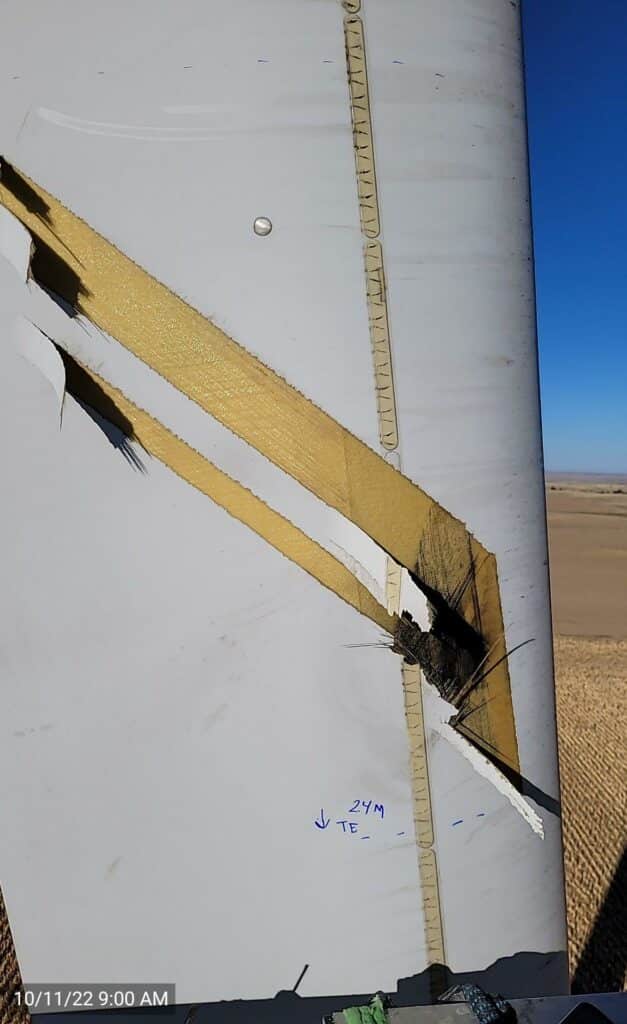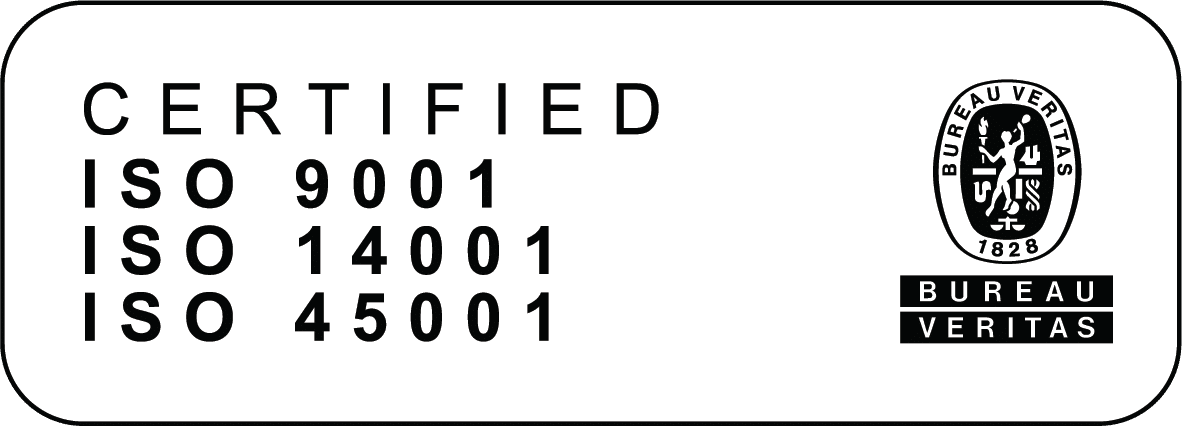Over the last few weeks, I have written about the importance of preventive maintenance and about one of the most common problems with wind turbine blades, leading edge erosion. Today I will look at another issue that causes problems with blades – lightning strikes.
Lightning strikes are an age-old problem and today mitigation methods are well understood and widely deployed from buildings to airplanes. Benjamin Franklin first developed the concept of the lightning rod back in the 1700s and demonstrated that an electrically conductive path can safely channel lightning strikes into the earth. Over the following two centuries his invention has been refined to the Lightning Protection Systems (LPS) we know and use today.

Multiple international standards exist to govern the implementation of LPS applications across the different industries and circumstances. In wind energy, that standard is the IEC 61400-24. The comprehensive standard contains the definitions of lightning environment, the risk assessment for wind turbines in that environment and, among other things, the three recommended types of LPS designs:
- Lightning receptors placed in the tip of the blade, with an internal metal conductor used to carry the current to the hub.
- Metallic conductor placed around the edges of the blade to serve as termination and down conductor to the hub.
- Metal mesh placed on the side of the blade to carry the lightning down the blade to the hub.
Each of these design types are built to provide a safe conductive path for lightning to strike through or along the blade to earth, minimizing the possibility of damage to the wind turbine. In most cases, these designs work as intended, but there are some fundamental problems.
Firstly, the IEC 61400-24 standard was first published in 2010 and there is a significant installation base of wind turbines which were designed before the IEC standard was adopted. Wind turbines were certainly built with LPS even before the standard was adopted, but there was more variance between the chosen mitigation strategies and, as we have seen in our work, the lightning environments were not fully understood in some developments, leading to inadequate LPS designs and installations. Today the situation is much better, but many turbines built before 2010 will be with us for a long time to come.
Secondly, according to the statistics in the IEC 61400-24, 4-8% of all wind turbines will suffer lightning strike damage every year. In areas with high lightning intensity this number can be higher, however. This is something Bladefence has seen firsthand and significant differences can be found even within one wind farm where certain turbines are hit more often than others. There are reports from Japan where a single wind turbine blade was hit for more than 100 times in a single year.
The unpredictable nature of lightning occurrence in combination with the difficulties of inspecting the LPS can lead to lengthy delays between the lightning strike and the inspection. In contrast, airplanes are inspected after every lightning strike – no exceptions. I am not saying that wind turbine blades should be manually inspected after every lightning strike, but the reality is that this will lead to situations where blade damage can go unnoticed for a substantial period causing potentially significant secondary damages. We have seen cases where following a lightning strike a large chunk of the down conductor cable inside the blade was completely vaporized rendering the LPS inoperable. This type of damage is impossible to notice without conducting an on-site resistance measurement of the entire LPS. Even without a complete failure of the LPS, the system can become ineffective due to insufficient contacts between the receptor, the down conductor cable, the root connection, the lightning transfer system, and the earth. This leads to the third fundamental problem – the cost.
It has been found that up to 60% of operational losses with blades can be traced to lightning strikes. The levels of damage and the related repair costs can be highly variable, but it has led insurers to incur significant losses over the recent years.
The lightning strike damages can be divided into two groups: 1) “force majeure” where the lightning strike has unusually high current exceeding the design limitations of the LPS and 2) defects in the LPS.
Due to rising costs, the insurers are increasingly taking a position where lightning strikes are no longer unforeseeable and therefore not insurable. We have witnessed these cases firsthand. Even if the insurance has eventually covered the damage, it has led to increased premiums, and to the transfer of burden-of-proof to the owners, where they need to demonstrate that the LPS was working, as designed, at the time of the lightning strike.
This changing landscape is not surprising as a serious lightning strike damage can cost hundreds of thousands to repair, or in the worst case, lead to a blade replacement, costing potentially up to a million dollars. If you can source a new blade for your aging turbine at all, that is.
So, what should be done? As with the leading-edge erosion in my last post, there are no magic tricks which would solve the problem entirely. From the owner’s perspective, it comes down to diligent inspections and repairs as problems occur. Or more preferably, the implementation of a comprehensive blade maintenance program, which includes regular LPS inspections and resistance measurements.
If you are interested in discussing any of your blade issues, do not hesitate to contact me or our sales teams in Europe and North America.
Be safe out there!
